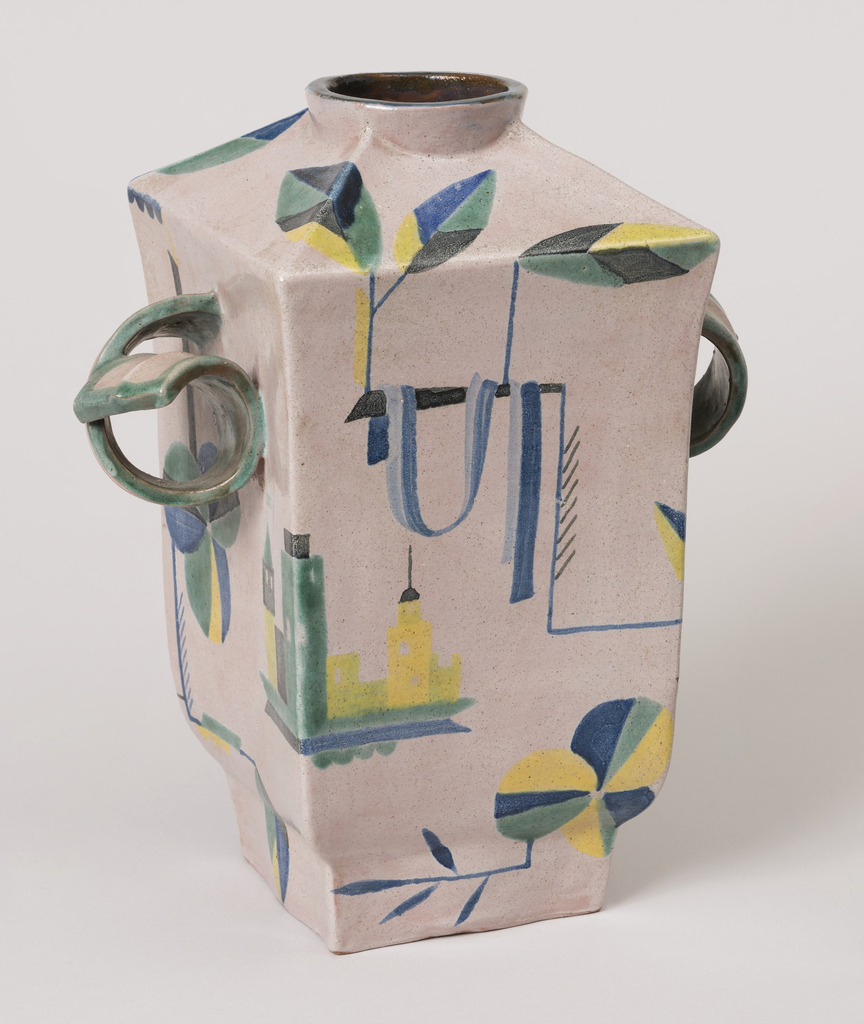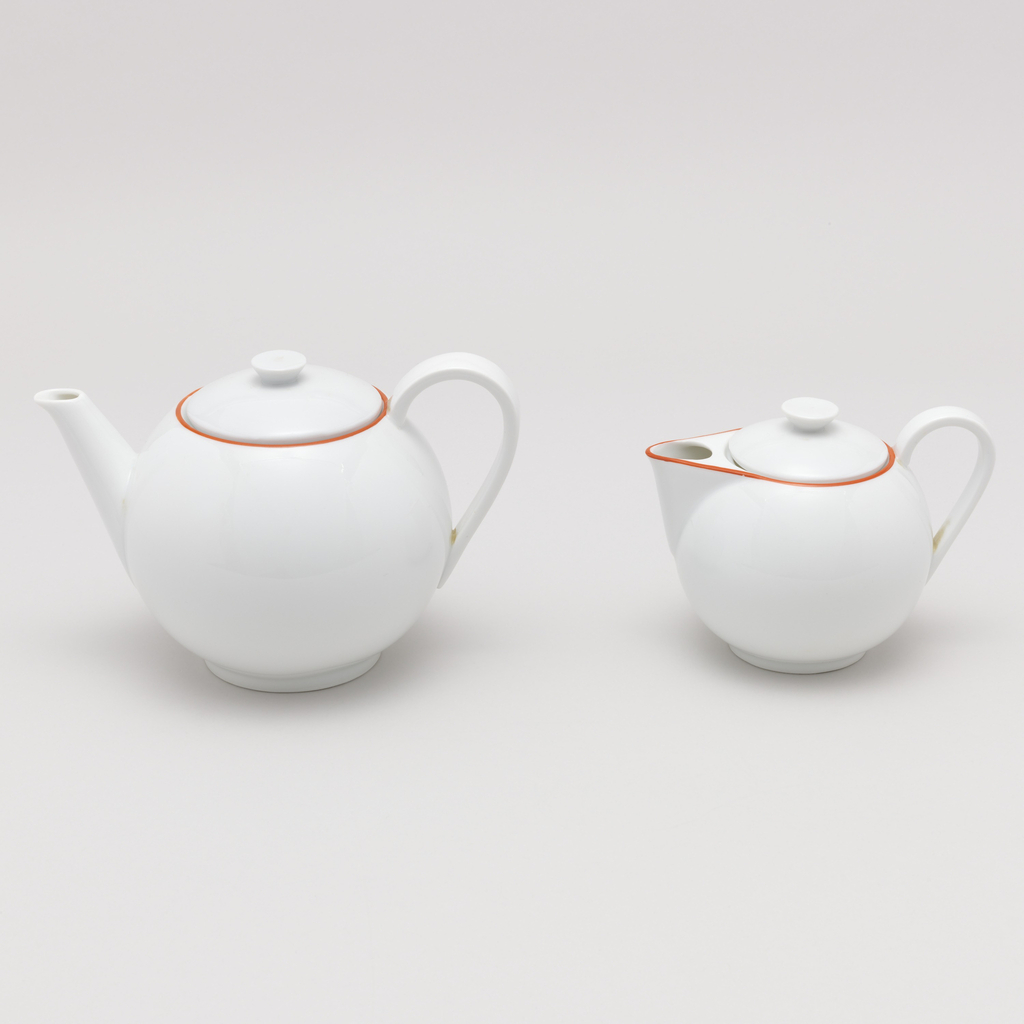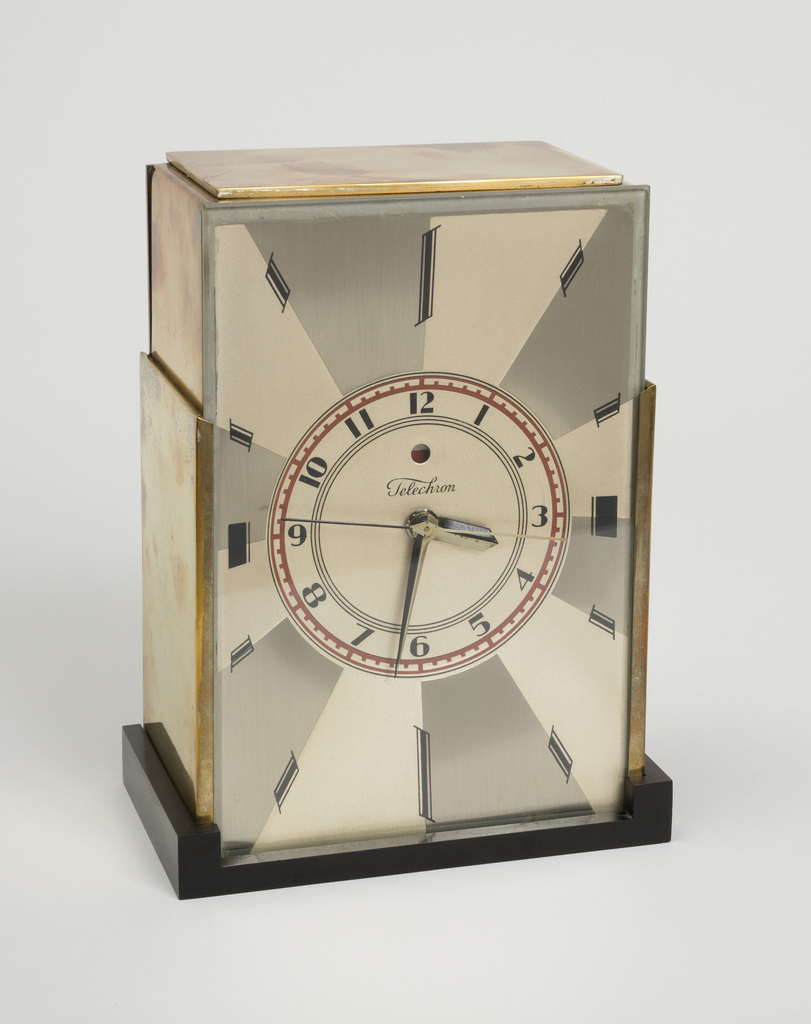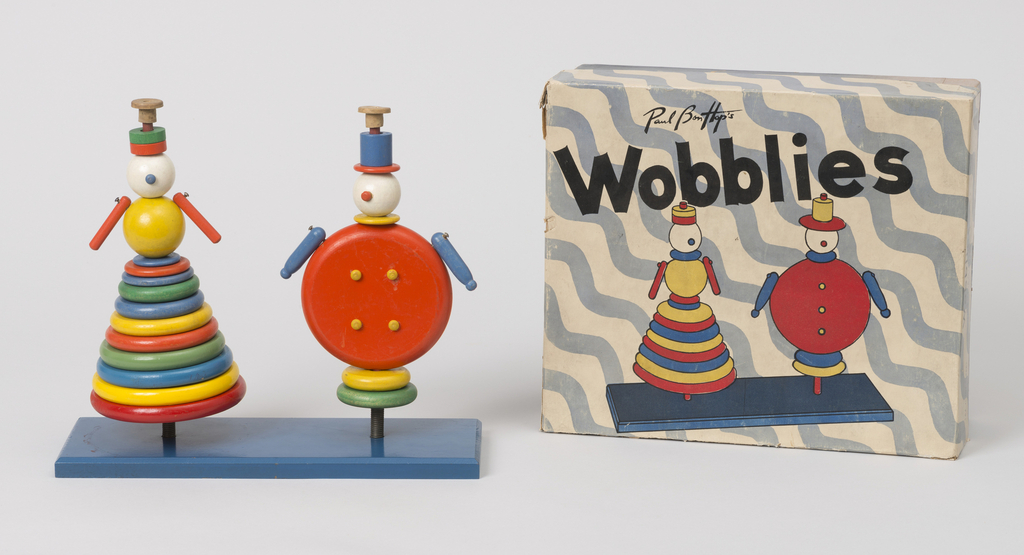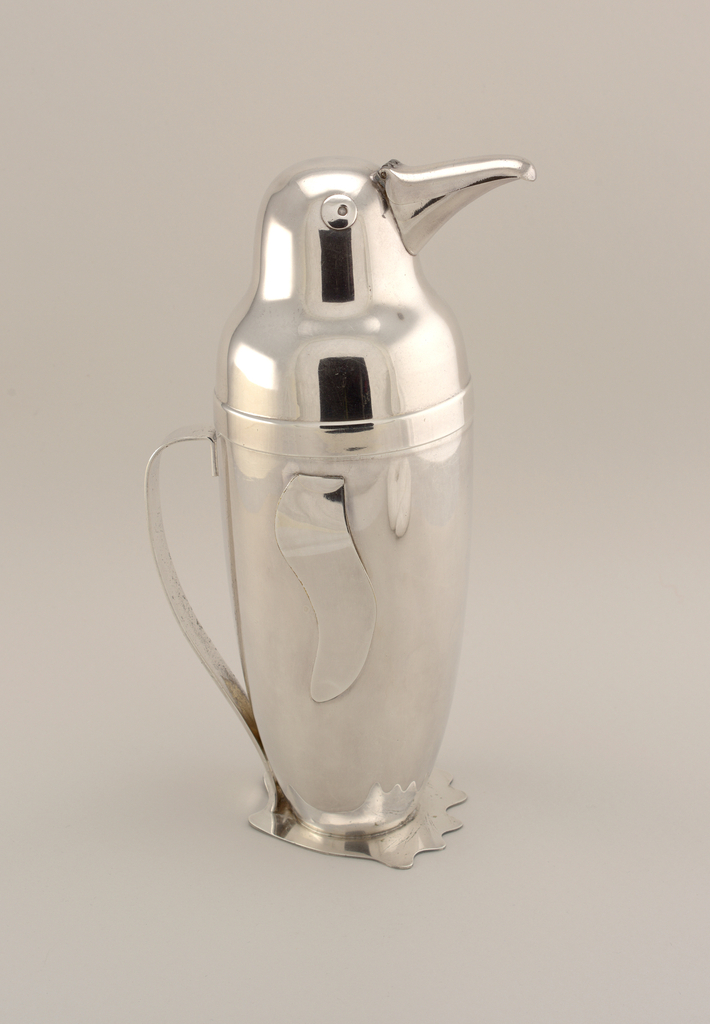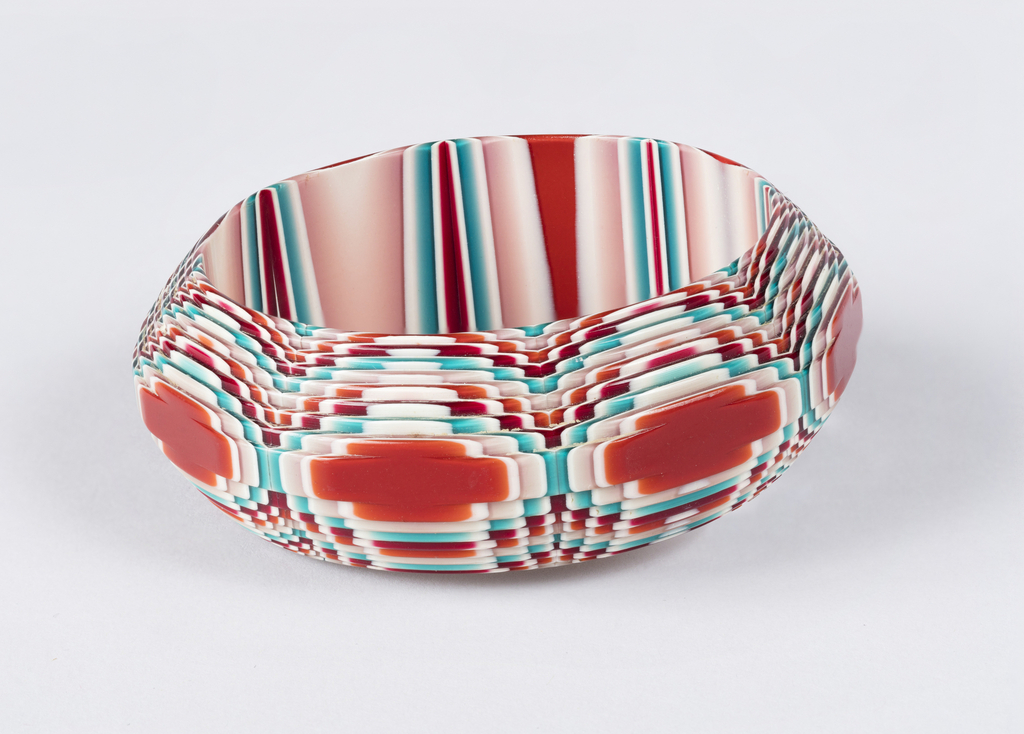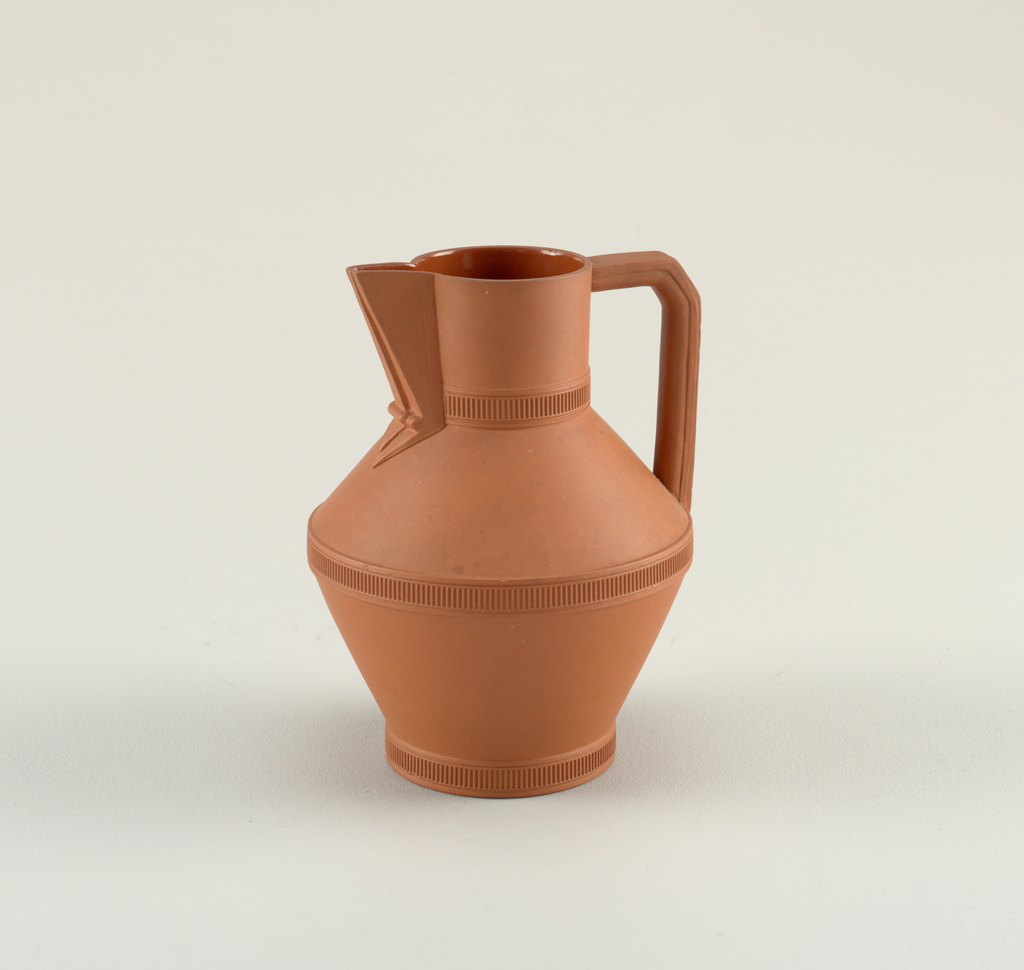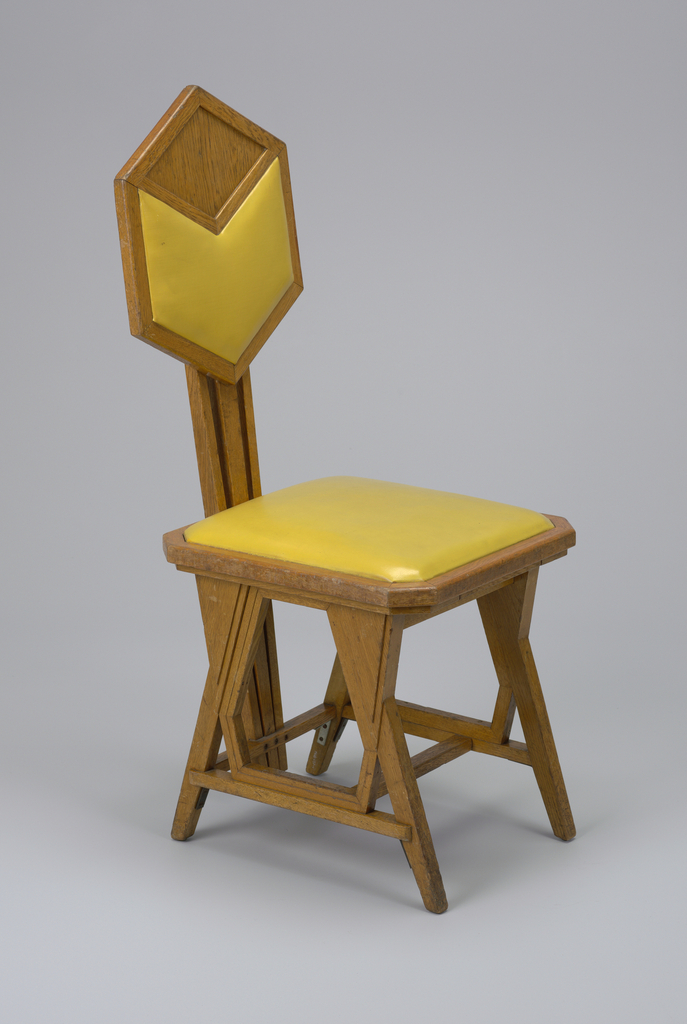Modern Viennese design greatly influenced American style during the Jazz Age. This vase, currently on view in the The Jazz Age: American Style in the 1920s, chronicles this dialogue in the history of modern design. Remarkably, it was one of a pair originally offered in the short-lived Wiener Werkstätte showroom in New York City. Established in 1921...
Now on view in The Jazz Age: American Style in the 1920s, this mocha pot by Ladislav Sutnar effortlessly combines functionality with modern design.
Now on view in The Jazz Age: American Style in the 1920s, Paul T. Frankl's "Modernique" clock design provided the perfect form for ingenuity in timekeeping.
The Wobblies show their wobbliness, which is cleverly illustrated on their box by faint wavy blue lines. Interestingly, there are two definitions of the word wobbly. The first is “inclined to wobble; shaky.” A Wobbly (capitalized) is also “a member of the Industrial Workers of the World, an international, revolutionary industrial union founded in Chicago...
In a scene from the 1934 film, The Thin Man, retired detective Nick Charles (William Powell) demonstrates to a group of bartenders the skills needed to shake a good cocktail. While vehemently shaking a cocktail shaker with one hand, he says to them, “See, the important thing is the rhythm, always have rhythm in your...
Lea Stein’s laminated celluloid jewelry designs joyously celebrate the materiality of plastic. Fusing together thin sheets of brightly colored acetate to create elaborately layered designs—seen here in this bracelet from 1970—Stein and her husband, Ferdinand Steinberger, developed this process in the late 1960s. Steinberger was a chemist who invented this new chemical process, which allowed...
In a December 2016 visit to Cooper Hewitt, George R.Kravis II converted the Promised Gift of this teapot to a gift, joining a large group of objects that helps tell the story of twentieth and twenty-first century design, much of which represents the best of design often for everyday use. It is the first piece...
During the Victorian era, Christopher Dresser vigorously designed household objects in a multitude of materials. He designed ceramics, metal, glass, and much more. This versatility was part of his brilliance as a commercial designer. While paying attention to both ornament and form throughout his career, Dresser’s attention shifted more toward form after visiting Japan in...
Echoing the larger artistic vision of Frank Lloyd Wright’s Imperial Hotel in Tokyo, this chair was designed for the hotel’s Peacock banquet room in the early 1920s. Amongst the 700 drawings that exist for the hotel, most are for its interior, showing how significant its design was.[1] The chair’s hexagonal back and square seat reflect...
